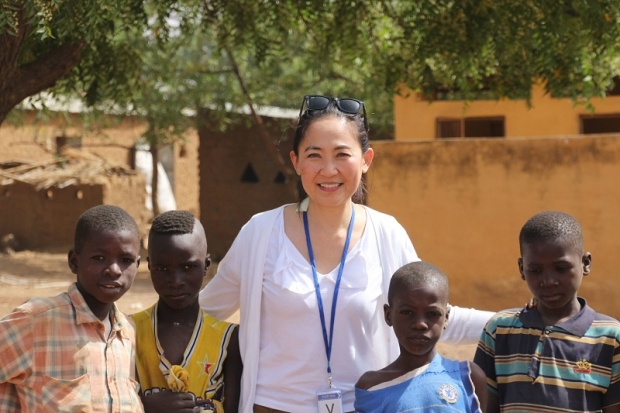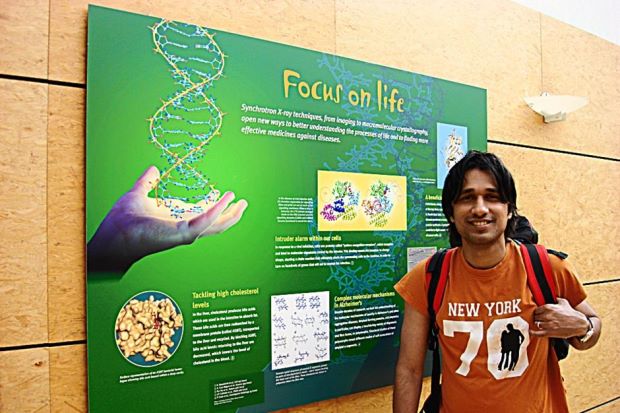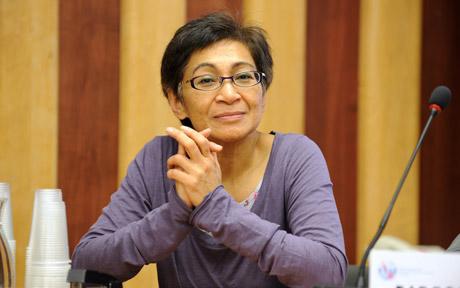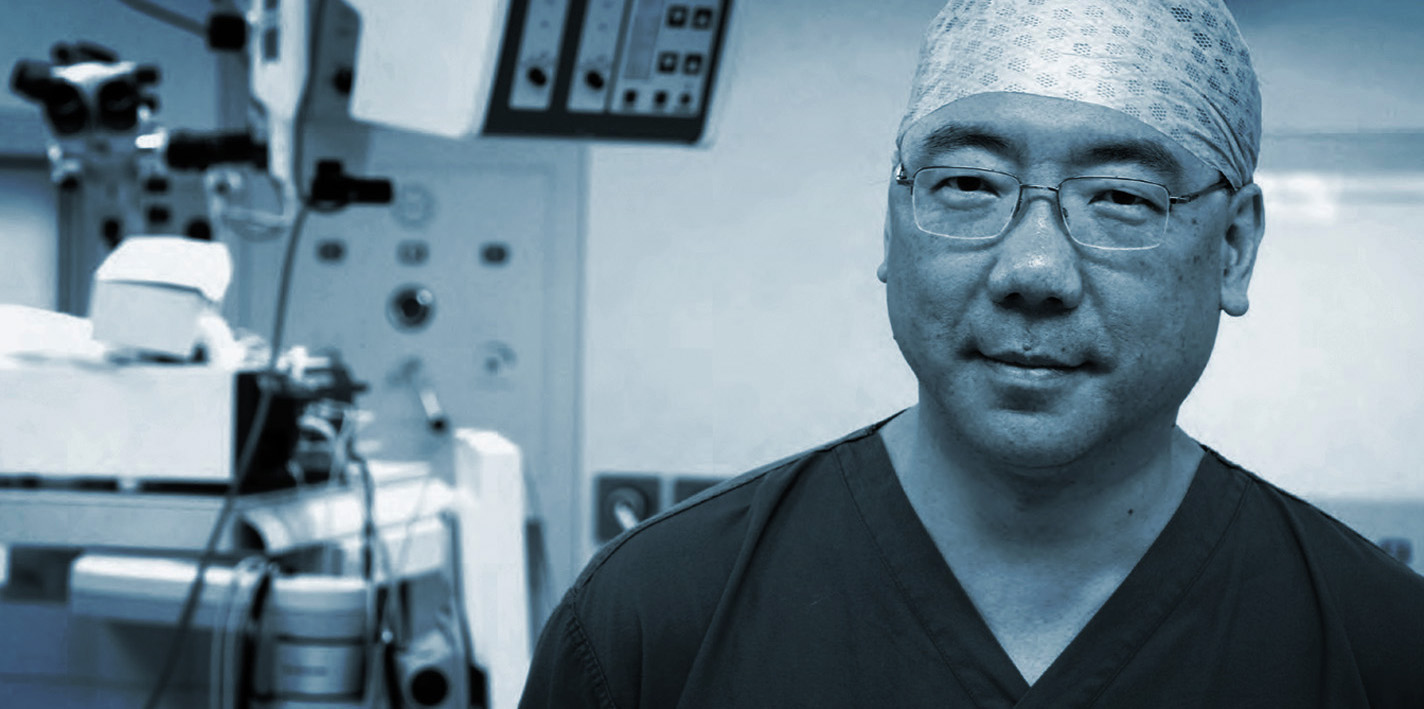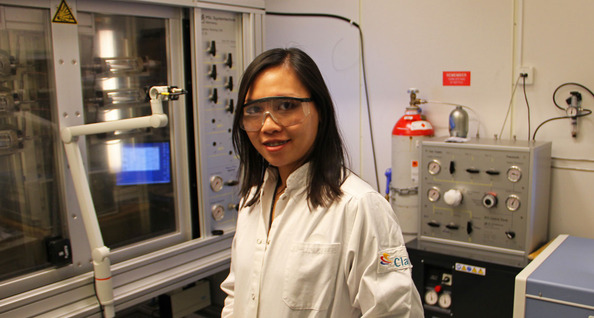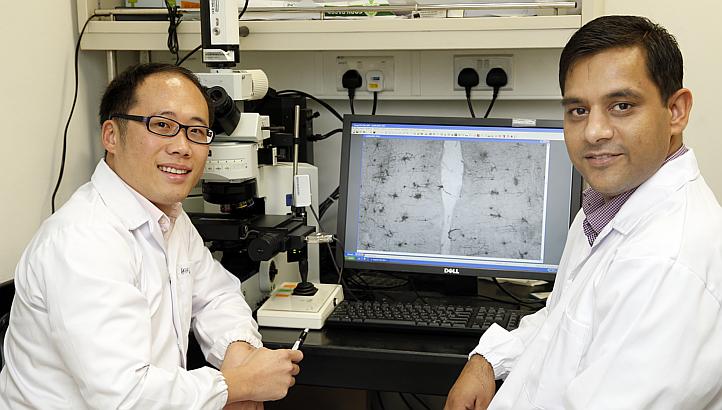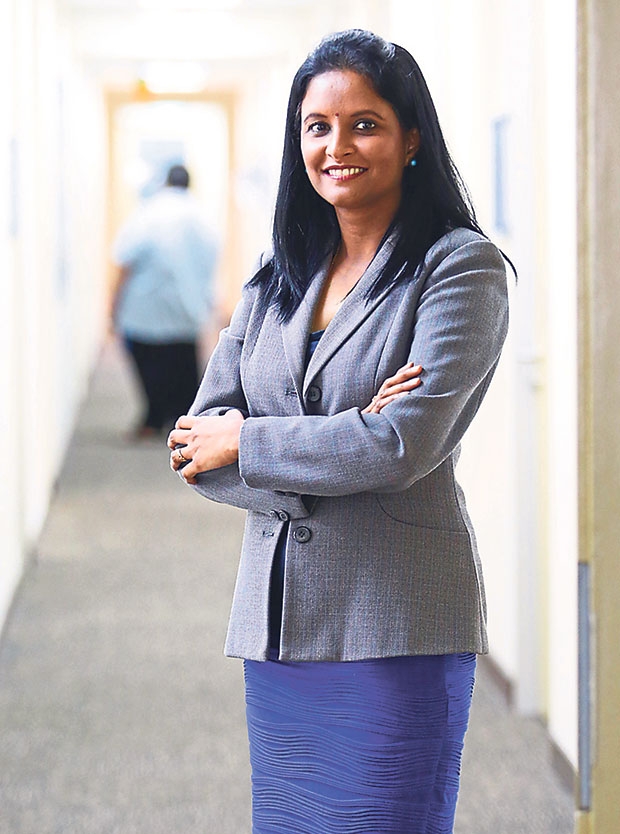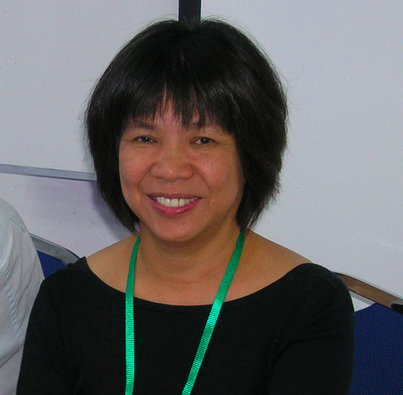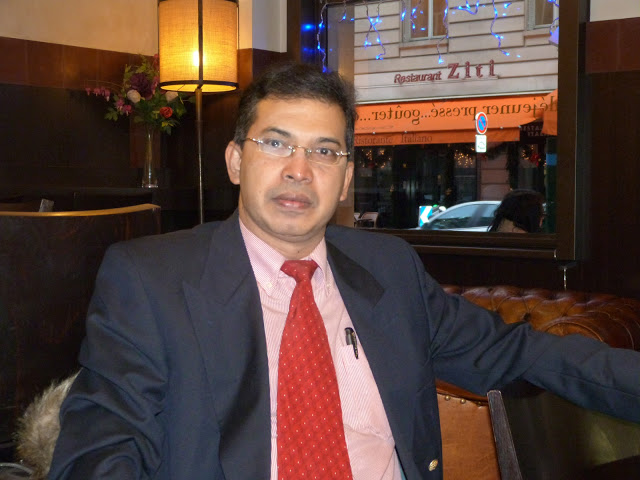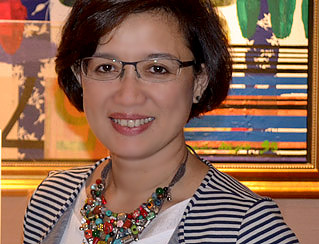10 Malaysian Scientists Whose Research Is Making The World A Better Place
Malaysians, making science cool for the world.
1. Dr. Betty Sim Kim Lee. The US-based scientist helped develop the PfSPZ vaccine that protects people from malaria.
How did she do it?
A biotechnology company has developed the first 100% effective malaria vaccine and is now hoping to crowdfund the production of a robot capable of efficiently manufacturing it.
Researchers at Sanaria, a Maryland-based biotechnology firm, developed the PfSPZ Vaccine that proved to be 100% protective against malaria in clinical trials.
Every year, malaria causes illness in over 200 million people worldwide, resulting in 600,000 deaths. Before PfSPZ, there was no vaccine capable of fully protecting against the malaria parasite.
"This was a concept that most people thought was impossible," said Dr Kim Lee Sim, executive vice president of process development and manufacturing at Sanaria. "People said: 'This is a crazy idea.'"
The method developed involves extracting malaria parasites dosed with radiation from the saliva glands of mosquitoes. Unfortunately, the production of the vaccine is hindered by the fact that the process is time consuming and requires a production line of highly trained scientists.
2. Indran Mathavan. A motor speech impediment did not stop him from getting a scholarship at one of the world’s leading membrane protein laboratories. He later helped to discover how certain germs function, paving the way for more effective drugs to combat them.
How did he do it?
"A car accident at age five had severely damaged the left side of his brain and left Indran with a motor speech impediment called disarthria, which causes one to stutter. He spoke slowly, and at times, resorted to writing down his thoughts. I imagined him doing this with prospective Malaysian employers and interview panels, and how they might react. Indran’s experiences said it all: in 100 applications over three years, he made the shortlist for every single one – and was rejected at all of them at the final interview stage.
He didn’t give up, and eventually won the prestigious scholarship opportunity from the Science, Technology and Innovation Ministry to join Nobel laureate Dr Venkatraman Ramakrishnan at Diamond Light Source to study the structure of oil palm proteins."
Scientists from the UK and France have gained the first structural insights into the warfare that takes place when bacteria are starved of nutrients. To uncover the bacterial war tactics, scientists used structural data collected on the crystallography beamlines at Diamond, combined with modelling and biochemical experiments. The team brought together scientists from Imperial College London, the Muséum National d’Histoire Naturelle in Paris and the University of Oxford, and their results have just been published in Nature Chemical Biology.
diamond.ac.uk3. Dr. Mazlan Othman. Dato' Mazlan is the first Malaysian astrophysicist and the former Director of the United Nations Office for Outer Space Affairs. She also pushed for space science to be part of the school curriculum in 1990 and established the National Plantetarium in 1986. She now oversees the Malaysian National Space Agency.
How did she do it?
"When I was young, I wasn’t thinking of going into science. I was thinking of going into English literature and the arts, but my teachers thought that I was doing too well in science to do those things and they put me in a pure Science stream. I was the first few students in a pure Science stream in my school. But you know, I don’t regret that my teachers did that because when I discovered science, I fell in love with it, especially Physics.
So my motivation was because I fell in love with Physics, especially I was so fascinated by E = mc2, the idea that small numbers multiplied by a huge number can become meaningful. When I found physics, I of course found astrophysics, and the beauty of the universe brought me back to my interest in the arts. So, I sort of went around to what I really like in the end, but it was a different path from what I had anticipated."
4. Professor Sir Peng Khaw. The London-based professor was recently knighted for his contributions to ophthalmology and glaucoma, pioneering techniques which are the standard practices today.
How did he do it?
Professor Sir Peng Tee Khaw has a special interest in the surgical and medical treatment of the refractory glaucomas, particularly paediatric glaucoma. His group undertakes research into new surgical techniques and new treatments to prevent scarring and encourage regeneration of tissues after ocular surgery and disease. They have developed inexpensive single applications of intra-operative anti-metabolites that have been tested in clinical trials across the world, and have also developed new surgical techniques, including the Moorfields Safer Surgery System, dramatically reducing bleb related complications worldwide. They are developing, drug delivery systems, stem cell therapies and a new single application anti-scarring treatments
Professor Sir Peng Tee Khaw has delivered over 20 national and international named lectures, won numerous awards including the first international ARVO Pfizer Translational Medicine Prize. He has raised grants of over £100 million, including funding for the world’s largest Children’s Eye Hospital and translational research clinical centre, and was knighted in the Queen’s Birthday Honours for 2013 for his services to ophthalmology. He passionately believes that scientific research will enable us to achieve new and better treatments to changes lives for the better.
5. Dr. Pei Cheng Chua. The Malaysian scientist recently won the Birkeland Prize for her thesis in the field of oil and gas. Her research led to the design of new Low Dosage Hydrate Inhibitors that are more environmentally friendly.
How did she do it?
Dr. Chua's research focuses on how natural gas combined with produced water under high pressure and low ambient seabed temperatures can form hydrates and cause gas hydrate plugging, which in the worst case can completely halt the flow. Chua has designed, produced and pressure tested new Low Dosage Hydrate Inhibitors which have proved to perform better and have less environmental impact than products currently on the market.
“I hope that my research help to further develop the development of gas hydrate inhibitions, and furthermore becomes a good environmental friendly product,” Dr. Chua said. “I was in doubt if I should work in the oil & gas industry due to the impact this sector has on the environment. But we cannot eliminate the use of oil & gas overnight, and we need to overcome the gas hydrate problem industry, so I wanted to find better and more green ways to do it,” she explains.
6. Associate Professor Lim Lee Wei. The Malaysian born scientist from Sunway University discovered that deep brain stimulation can help reduce the symptoms of dementia.
How did he do it?
The preliminary study was conducted while he was a research fellow at Maastricht and Oxford University, and the findings were also published recently in the Translational Psychiatry, a journal of the Nature Publishing Group, by Macmillan Publishers Limited.
For memory enhancement, bilateral electrodes were implanted in the prefrontal cortex, a key brain structure for regulation of emotion, cognition and decision making.
After chronic stimulation, the research team found a significant improvement on both the short- and long-term memory functions in animals, using well-validated behavioural memory tasks.
‘Although the findings from present experimental model show promising results, validation in the clinical studies is essential to determine its efficacy. Nevertheless, this is a major step forward on the journey towards combating dementia in humans’, said the vice-chancellor of Sunway University, Professor Graeme Wilkinson.
7. Dr. Mahaletchumy Arujanan. The Klang-born biotechnologist was recently nominated in the Top 100 most influential people in her particular field. She helped develop resolution for Muslim countries on the use of genetic modifications (GM) through dialogues with religious scholars. She is internationally active in influencing policies, regulations and biotechnology communication to ensure the potential of this field benefits agriculture, medical and industrial sectors.
How did she do it?
"We are not completely atheists or free thinkers, so ethics and religion here are important. So we have to see like cloning, what is it for, why do you want to do it? There are so many issues.
We engage ulamas as well. So what we did here was to organise a dialogue with scientists and ulamas. We wanted scientists to understand what are the Islamic principles and the ulamas to understand what exactly happens in these science processes. Ulamas will be able to make decisions not just based on Shariah principles but also scientific knowledge.
In the Philippines, there was this blanket fatwa from the Ulama Council saying that all genetic modification (GM) is haram. We had these dialogues with the ulamas and we came up with this resolution. So then, the Philippines lifted their fatwa and said it is haram only if the genes come from porcine sources… many countries were watching and read the resolution we came up with and they started being more open to biotech. Malaysia also has a fatwa that says the same thing. GM is allowed only if the source is not porcine. Which is fair to all."
8. Professor Susan Lim. The late professor was an active parasitologist and the leading specialist in Southeast Asia on a group of parasitic flatworms called the Monogenea. Her expertise is greatly appreciated in the fishing industry.
How did she do it?
Professor Susan was the leading specialist in Malaysia and Southeast Asia on a group of parasitic flatworms called the Monogenea. Most monogeneans are parasites of fishes; they are a relatively large group with about 5,000 described species. Some monogeneans are of significant economic importance because, when they occur in huge numbers, they can cause serious impact on fishes, especially food fishes cultured in farms.
Through the 1980s, Susan published actively, describing many monogeneans and establishing herself as a key player in the field. In 1987, she completed her PhD, remaining on the university staff as a zoology tutor. However, her academic prowess was such that she was promoted to a lecturer in 1989, after which she never looked back, becoming a full professor by 2003. Publishing regularly in good international journals, she became well known internationally from her papers and from her active attendance at and participation in international meetings.
She described more than 100 new species, several new genera and a new family. Taking into account these and her specific re-assignments (together more than 200 taxa), she became the sixth most prolific monogenean worker ever (and the foremost female worker).
9. G. Kogelen Govindasamy. The Paris-based Malaysian is known as the DNA repair, anti-ageing and organ rejuvenation scientist.
How did he get there?
In 1981, G. Kogelen was offered membership of International Mensa by British Mensa, which is based in England. He was certified to have an IQ of 180 based on the Cattell scale, which was higher than the IQ of 99% of the then human population. He then decided to go into the field of DNA repairs and later pursued a Doctorate in Philosophy (DPhil.) between 1997 and 2000 at Johns Alwyn Gifted University, an exclusive university for high IQ individuals.
G. Kogelen later joined Aaride J.A. International Inc, a multinational corporation specialising in Plant Based Peptides and Regenerative Healthcare in September 1990. He has since furthered his career with the company and currently holds the position of Chief DNA Repair Scientist.
10. Dr. Adeeba Kamarulzaman. Dr. Adeeba's introduction of evidence-based harm reduction programs to prevent HIV transmission among people who use drugs.
How did she do it?
Her passion began at Monash where she studied Medicine, and then went on to train in Infectious Diseases in Melbourne. Upon returning to Malaysia, she established one of the first Infectious Diseases Units in the country which has become a leading tertiary referral centre for infectious diseases and HIV/AIDS.
In 2007, Dr Kamarulzaman established the Centre of Excellence for Research in AIDS (CERiA) at the University of Malaya, one of the few dedicated HIV research centres in the region.
In addition to her busy clinical and academic commitments, she has been involved in the community response to the HIV epidemic. As President of the Malaysian AIDS Council (MAC) she successfully advocated for the introduction of evidence-based harm reduction programs to prevent HIV transmission amongst people who use drugs.
In 2012, she was recognised for her significant achievements with an Advance Global Alumni Award, which celebrates the achievements of a non-Australian alumnus of an Australian university.
Know any more Malaysian scientists or doctors we missed out? Let us know in the comments below!
Special thanks to the Malaysian Reddit community for helping out!
